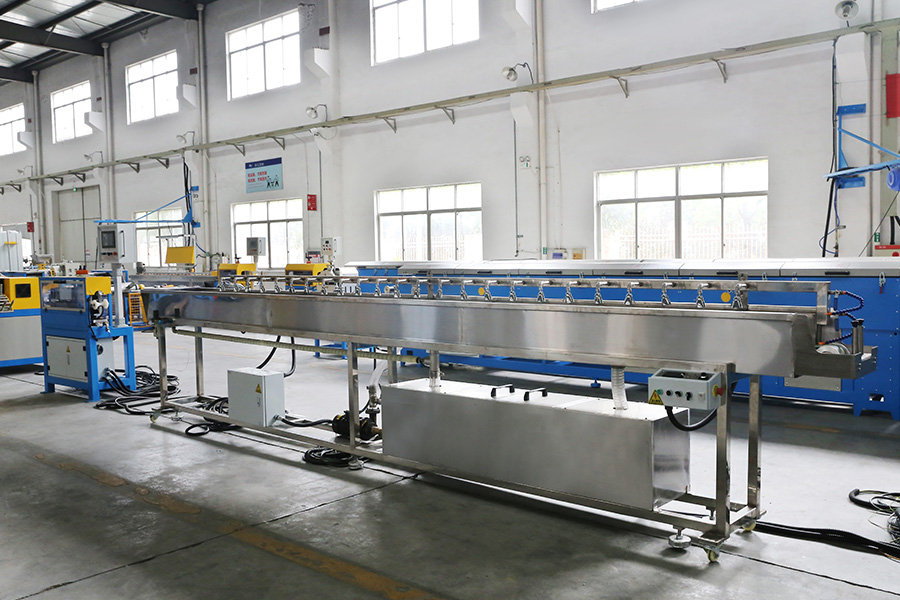Key Components of a Typical Rubber Extrusion Production Line
Rubber extrusion is a widely used method for manufacturing continuous rubber profiles such as hoses, seals, weather strips, and tubing. The rubber extrusion production line plays a crucial role in shaping raw rubber compounds into finished or semi-finished products with uniform cross-sections.

The extrusion process begins with the preparation of rubber compounds. These materials, usually pre-mixed in a separate internal mixing or open mill process, are delivered to the production line in the form of strips, pellets, or continuous sheets. A feeding system may include:
Rubber Strip Feeder or Conveyor: This delivers rubber strips to the extruder intake.
Cold Feed System (optional): If cold-feed extruders are used, the material can be fed at room temperature, reducing the need for preheating and improving operational safety.
Material preparation also involves quality checks to ensure that the compound meets required specifications in terms of hardness, viscosity, and filler distribution.
The extruder is the core component of the production line. Its primary function is to apply pressure and heat to the rubber compound and force it through a die to shape it into the desired profile. Key elements of the extruder include:
Screw and Barrel Assembly: The rotating screw pushes the rubber forward through the heated barrel, where it softens and becomes easier to shape.
Temperature Control Zones: These zones ensure the rubber reaches the appropriate processing temperature without degrading.
Gearbox and Motor: These components drive the screw and control extrusion speed.
Die Head: Attached to the front of the extruder, the die shapes the rubber into its final profile, such as a tube, strip, or gasket.
Extruders can be single-screw or twin-screw, although single-screw models are more common in standard rubber extrusion.
After extrusion, the rubber profile must be vulcanized to gain elasticity and strength. Curing methods depend on the type of rubber compound and product application. Common curing systems include:
Hot Air Vulcanization Oven (HAV): This uses high-temperature air to cure extruded profiles. It is suitable for materials that do not require direct contact heating.
Salt Bath or Liquid Curing Tanks: These provide uniform heat and are often used for high-precision applications like automotive sealing strips.
Microwave Vulcanization: This method is energy-efficient and suitable for continuous extrusion processes involving specific rubber types like EPDM.
Proper curing ensures dimensional stability and durability of the final product.
Once cured, the rubber product must be cooled to maintain its shape and prepare it for further processing or cutting. Cooling methods generally include:
Water Spray Tanks: Common for hose and tubing products.
Cooling Conveyors with Air Blowers: Used where water cooling is not suitable or where additional drying is required.
Cooling length and method depend on the thickness, speed, and thermal properties of the extruded profile.
The puller ensures steady movement of the product through the production line. It maintains consistent tension and synchronizes with the extruder's output rate. It typically includes:
Belt or Caterpillar Haul-Off: Rubber-coated belts or chains gently grip the product and pull it forward without deformation.
Precise puller control is essential for uniform product dimensions and surface quality.
Once the rubber profile has been extruded, cured, and cooled, it is either coiled or cut into desired lengths. This stage may include:
Rotary Cutters or Guillotine Cutters: These trim the product into specific lengths automatically.
Coiling Machine: For continuous products like tubing, the line may include a coiler for packaging.
Inspection and Marking Stations: Visual inspection systems or cameras detect surface defects, and printers may mark production codes on the final product.






 English
English 中文简体
中文简体 русский
русский



